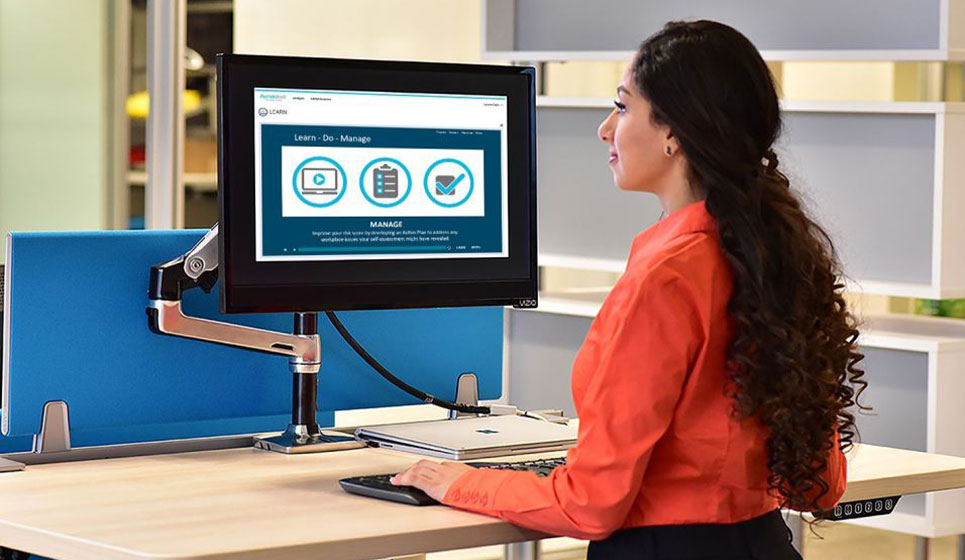Is a standing office workstation the cure to “sitting disease?”
04/08/2014

by Bryan Picco, AEP
There has been a push in office ergonomics to introduce standing workstations as an attempt to address negative health implications associated with sedentary seated office work, also known as “sitting disease”. But is simply having your staff work while standing the answer? A recent publication in the journal, Ergonomics, titled, “The influence of a seated break on prolonged standing induced low back pain development” investigates how low back pain can develop while standing. The report is by Kaitlin Gallagher, a doctoral student at the University of Waterloo, who researches low back pain (LBP) development during prolonged occupational tasks. Key findings and implications of her study include:
- Mandating standing workstations in your office will not eliminate LBP. Fifty-five percent of Gallagher’s study participants developed LBP during 45 minutes of sedentary standing. Curing the “sitting disease” is not as simple as eliminating sitting.
- Alternating between standing and sitting mitigates the onset of LBP. Gallagher highlights that pain developers moved their low back less than those who did not develop pain while standing, highlighting the importance of varying working postures. In fact, the study’s participants’ LBP decreased as they sat for 15 minutes. However, the optimal ratio between the two postures is not known and might be unique to the individual.
- Encourage alternate ways to cut-back on sedentary work. There are countless work practices that will get your workers off of their seats to reduce sedentary work rather than standing statically. Instead of traditional seated conference discussions, schedule walking meetings outside or down hallways. Challenge your staff to talk on the phone while pacing or walking around their cubicle. Finally, walk over to your co-workers' office to meet face-to-face instead of texting or e-mailing.
Forcing a worker to adopt a certain posture (standing) and emphasizing the negative outcomes of another (sitting) could be detrimental to back health. As Gallagher states at the end of her article, “this may make a worker feel like he needs to work in a certain position even if it causes increased discomfort and pain.” Rather, office workers should be free to control their working postures in a way that is comfortable to them, preferably with a workstation that adjusts for both sitting and standing postures.






